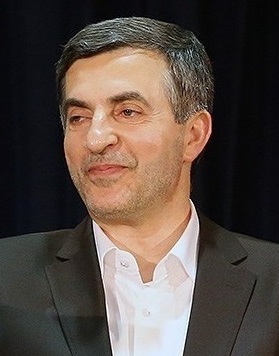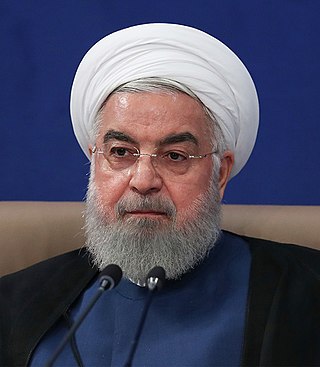This article needs additional citations for verification .(December 2009) |
| |||||
| Decades: | |||||
|---|---|---|---|---|---|
| See also: | Other events of 2006 Years in Iran | ||||
The following lists events that happened during 2006 in Iran.
This article needs additional citations for verification .(December 2009) |
| |||||
| Decades: | |||||
|---|---|---|---|---|---|
| See also: | Other events of 2006 Years in Iran | ||||
The following lists events that happened during 2006 in Iran.
| | This section needs expansion. You can help by adding to it. (October 2010) |
Iran has research sites, two uranium mines, a research reactor, and uranium processing facilities that include three known uranium enrichment plants.

Iran is not known to currently possess weapons of mass destruction (WMD) and has signed treaties repudiating the possession of WMD including the Biological Weapons Convention, the Chemical Weapons Convention, and the Non-Proliferation Treaty (NPT). Iran has first-hand knowledge of WMD effects—over 100,000 Iranian troops and civilians were victims of chemical weapons during the 1980s Iran–Iraq War.
Mahmoud Ahmadinejad was President of Iran from 3 August 2005 to 3 August 2013, and during that time had repeatedly made contentious speeches and statements against Israel. Ahmadinejad refused to call Israel by name, instead calling it the “Zionist regime”. He has called for the "elimination of the Zionist regime". Ahmadinejad took part in a protest called "The World Without Zionism" and has derided Israel on numerous occasions. He has urged regional powers to cut diplomatic and economic ties with Israel and halt oil sales. Tensions have risen over Iran's nuclear program. He has also provided funding, training and arms to Hezbollah and Hamas.
Military action against Iran is a controversial topic in Israel and the United States. Proponents of a strike against Iran point to the threat presented by Iran's nuclear program as a casus belli. Many Israelis, and particularly hardline politicians such as Prime Minister Benjamin Netanyahu, American neoconservatives, Iranian dissidents support military action to stop the program or go further to overthrow the regime. Opposition to military action is often based in pacifism, but some who are opposed to military action against Iran are opposed for other reasons.

Mahmoud Ahmadinejad is an Iranian principlist and nationalist politician who served as the sixth president of Iran from 2005 to 2013. He is currently a member of the Expediency Discernment Council. He was known for his hardline views and nuclearisation of Iran. He was also the main political leader of the Alliance of Builders of Islamic Iran, a coalition of conservative political groups in the country, and served as mayor of Tehran from 2003 to 2005, reversing many of his predecessor's reforms.
This is the timeline of the nuclear program of Iran.

Seyed Hossein Mousavian is an Iranian policymaker and scholar who served on Iran's nuclear diplomacy team in negotiations with the EU and International Atomic Energy Agency. He resides in the United States and is a visiting research scholar at Princeton University.

The Imam Hossein Comprehensive University is a public university located in Tehran, Iran.

Esfandiar Rahim Mashaei is an Iranian conservative politician and former intelligence officer. As a senior Cabinet member in the administration of President Mahmoud Ahmadinejad, he served as Chief of Staff from 2009 to 2013, and served as the fourth first vice president of Iran for one week in 2009 until his resignation was ordered by Supreme Leader Ayatollah Ali Khamenei.

The Presidency of Mahmoud Ahmadinejad consists of the 9th and 10th governments of the Islamic Republic of Iran. Ahmadinejad's government began in August 2005 after his election as the 6th president of Iran and continued after his re-election in 2009. Ahmadinejad left office in August 2013 at the end of his second term. His administration was succeeded by the 11th government, led by Hassan Rouhani.

The foreign policy of the Mahmoud Ahmadinejad administration was the policy initiatives towards other states by the former President of Iran, as different from past and also future of the Iranian foreign policy. Ahmadinejad's tenure as president came at a time of greater conflict, rhetorical or physical, than his predecessors. In following this there were various measures, external or internal, that led to his policy changes. This was primarily a division between relations with states of the Western world and the rest of the world.

Brazil–Iran relations are the bilateral relations between the Federative Republic of Brazil and the Islamic Republic of Iran. Relations are characterized by economic and diplomatic cooperation and are quite friendly. Iran has a productive trade balance with Brazil. The two governments signed a document to bolster cooperation during the G-15 Summit in Tehran in 2010. However, since the election of former Brazilian president, Dilma Rousseff, relations between the two countries recently have deteriorated greatly, following Rousseff shifting Brazil away from Iran due to Iran's violation of human and civil rights. Mahmoud Ahmadinejad's media adviser, Ali Akbar Javanfekr, was quoted as stating that Rousseff had "destroyed years of good relations" between them. He denied making such a statement.
Events in the year 2010 in the Islamic Republic of Iran.
Events in the year 2009 in the Islamic Republic of Iran.
Events in the year 2011 in the Islamic Republic of Iran.
Views on the nuclear program of Iran vary greatly, as the nuclear program of Iran is a very contentious geopolitical issue. Uriel Abulof identifies five possible rationales behind Iran’s nuclear policy: (i) Economy, mainly energy needs; (ii) Identity politics, pride and prestige; (iii) Deterrence of foreign intervention; (iv) Compellence to boost regional influence; and (v) Domestic politics, mitigating, through 'nuclear diversion' the regime’s domestic crisis of legitimacy. Below are considerations of the Iranian nuclear program from various perspectives.

The 16th Summit of the Non-Aligned Movement was held from 26 to 31 August 2012 in Tehran, Iran. The summit was attended by leaders of 120 countries, including 24 presidents, 3 kings, 8 prime ministers and 50 foreign ministers.

Hassan Rouhani is an Iranian Islamist politician who served as the seventh president of Iran from 2013 to 2021. He is also a sharia lawyer ("Wakil"), academic, former diplomat and Islamic cleric. He served as a member of Iran's Assembly of Experts from 1999 to 2024. He was a member of the Expediency Council from 1991 to 2013, and also was a member of the Supreme National Security Council from 1989 to 2021. Rouhani was deputy speaker of the fourth and fifth terms of the Parliament of Iran (Majlis) and Secretary of the Supreme National Security Council from 1989 to 2005. In the latter capacity, he was the country's top negotiator with the EU three, UK, France, and Germany, on nuclear technology in Iran, and has also served as a Shia mujtahid, and economic trade negotiator.
On 24 November 2013, the Joint Plan of Action, also known as the Geneva interim agreement, was a pact signed between Iran and the P5+1 countries in Geneva, Switzerland. It consists of a short-term freeze of portions of Iran's nuclear program in exchange for decreased economic sanctions on Iran, as the countries work towards a long-term agreement. It represented the first formal agreement between the United States and Iran in 34 years. Implementation of the agreement began 20 January 2014.

The Iran nuclear deal framework was a preliminary framework agreement reached in 2015 between the Islamic Republic of Iran and a group of world powers: the P5+1 and the European Union.